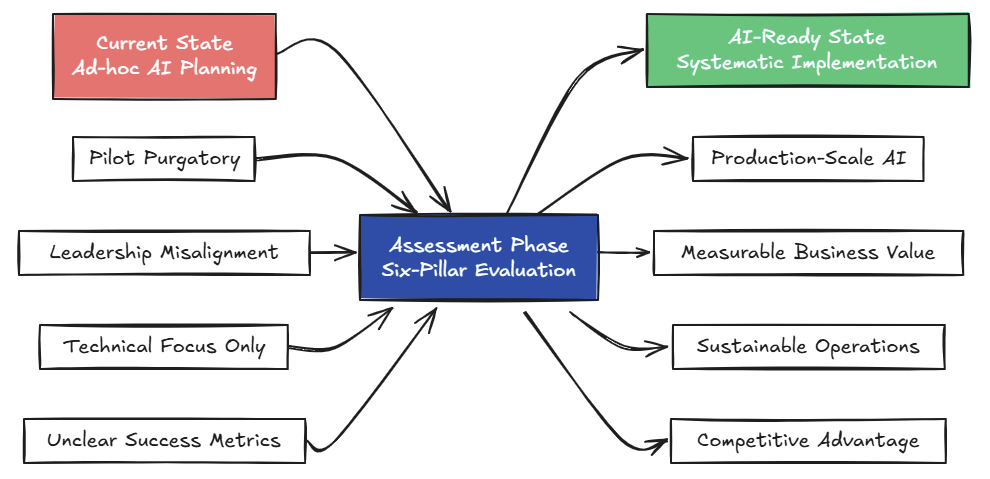The Complete Six-Pillar AI Readiness Framework
From Assessment to Implementation
You've unlocked the complete framework. This is the exact methodology I use to separate genuine AI readiness from expensive theatre, preventing the pilot purgatory that traps 99% of enterprise initiatives.
You already know the stakes. What follows is your systematic defence against the organisational gaps that kill AI projects before they scale.
Current Reality vs. AI-Ready State
Current State: Most executives operate with dangerous blind spots about their organisation's genuine AI readiness. They evaluate technical capabilities while completely missing the organisational orchestration requirements that determine success or failure.
AI-Ready State: You'll assess readiness across six interconnected pillars, identify specific capability gaps, and build prioritised improvement roadmaps based on evidence rather than assumptions.
The difference transforms you from someone hoping their AI initiative will work to someone who knows exactly why it will succeed.
Common Implementation Mistakes (And How to Avoid Them)
Most teams receive frameworks like this and immediately make predictable errors that undermine their assessment validity:
Mistake 1: The Technology-First Trap Teams focus exclusively on technical architecture while ignoring human infrastructure, governance, and financial preparedness. Result: technically sound initiatives that fail due to organisational resistance.
Mistake 2: The Self-Assessment Bias Internal stakeholders consistently overestimate their organisation's readiness levels. Without external benchmarks, you'll miss critical gaps that derail implementation.
Mistake 3: The Point-in-Time Fallacy Treating assessment as a one-time activity rather than ongoing capability monitoring. AI readiness shifts rapidly as technology and business conditions evolve.
Mistake 4: The Generic Framework Error Using standard assessment templates without customising for your industry, regulatory environment, or business model. Generic approaches miss context-specific requirements that determine success.
The complete Six-Pillar Assessment Framework systematically evaluates technical architecture, data quality, human infrastructure, governance maturity, operational readiness, and financial preparedness.
Each pillar includes specific diagnostic questions, maturity assessment criteria, and remediation strategies for common readiness gaps.
This isn't academic theory—it's the battle-tested methodology that separates systematic AI success from expensive failure.
Get the complete diagnostic framework below:




